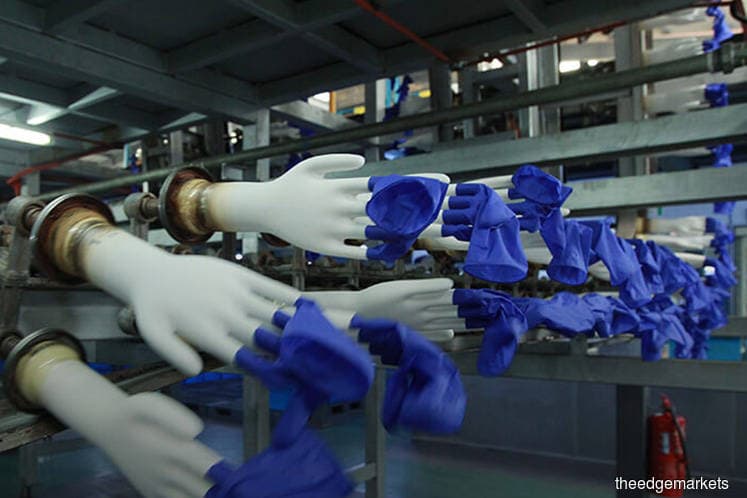
This article first appeared in The Edge Financial Daily on January 9, 2019
Rubber products sector
Maintain neutral: An imbalance in supply and demand is expected to manifest in 2019 with glove players expected to increase supply by about 15% versus annual global demand growth of 8% to 10%. The ringgit is expected to be weaker in the financial year 2019 (FY19) (US$-RM: 4.10 to 4.30), auguring well for the sector. By including Top Glove Corp Bhd into the FBM KLCI, the sector’s monolith, it will further provide the sentimental anchor to valuations. We maintained our “neutral” sector rating given the lofty valuations.
We estimate the top four players in the glove industry will have increased capacity by about 15% in 2019; the mammoth share being nitrile capacity. We noted a short-term imbalance is expected to manifest in 2019 with an increased supply outstripping an expected annual demand growth of 8% to 10%. For perspective, year 2019 will see an estimated addition of about 20 billion pieces versus 10.7 billion pieces in 2018. However, in view of the oligopolistic industry structure, we’re not ruling out the possibility of glove players eventually expanding capacity gradually to avoid price competition.
The ringgit is expected to be weaker in 2019, auguring well for the sector in maintaining its cost competitiveness against its regional peers. Our economics team projection for 2019 ranges between US$-RM 4.10-4.30, still within our forecast range. Within our coverage, Top Glove is the main beneficiary of a weaker ringgit against a stronger greenback as it has the highest exposure to natural rubber latex gloves.
The statutory minimum wage has increased to RM1,100, from RM1,000, effective January 2019. The increase in costs will be passed to customers. Ceteris paribus, we estimate the impact on net profit is between 1.5% and 2% for every RM100 increment in minimum wage.
In 2018, the price of butadiene, a core component in nitrile manufacturing, peaked in May at US$1,850 per tonne before retracing to US$1,130 per tonne at end-December. In 2019, we can expect the volatility of natural rubber to parallel the velocity of ethylene — its main feedstock — prices in Asia. We’re expecting the price of natural rubber at RM4 to RM5 per kg in 2019, versus the 2018 average at RM4.29 per kg, assuming there are no supply disruptions. Take note the price of natural rubber has been consistently below the RM4 per kg threshold since October 2018. A lower-than-expected natural rubber price will primarily benefit glove players, Top Glove and Supermax Corp Bhd, with a skewed product mix towards natural rubber.
Valuations remain lofty with the sector dancing between two standard deviations (SDs) (35 times) and one SD (29 times) three-year historical mean price-earnings ratio. We noted a further upside could be capped due to the velocity of earnings growth fizzling due to the mismatch between demand and installed capacity, resulting in downward pressure on average selling price.
We prefer Top Glove for its more balanced product mix — nitrile rubber versus natural rubber: 47%:53% — relative to other more nitrile-heavy players such as Kossan Rubber Industries Bhd (77%) and Hartalega Holdings Bhd (over 95%). Take note that natural rubber gross margins are between 20% and 21%, while nitrile gross margins hover about 18%.
We maintained our “neutral” rating on the sector as we believe valuations will be anchored by Top Glove’s recent inclusion in the KLCI and due to the export play factor on the back of an expected weaker ringgit moving forward. Top Glove, with a target price of RM6.26, is our top pick for the sector. — Hong Leong Investment Bank Research, Jan 8